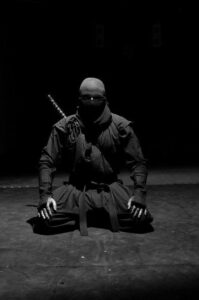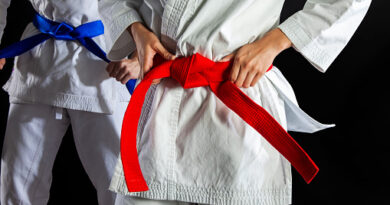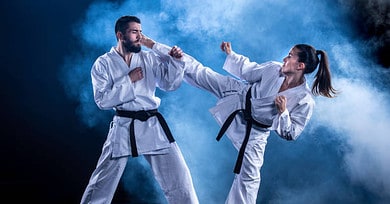What is Kuji and how did it become an integral part of the ninja’s arsenal of techniques?
Table of Contents
-
- Introduction
- The Practice of Kuji: A Guide to Getting Started with the Ancient Art
- The Symbology of Kuji: Uncovering the Hidden Meanings Behind the Symbols
- The Different Types of Kuji: Exploring the Different Forms of the Practice
- The Benefits of Kuji: How This Practice Can Enhance Your Life
- The History of Kuji: Exploring the Ancient Practice of the Ninja
- Conclusion
Introduction
Kuji (九字) is an ancient practice of the ninja, originating in Japan. It is a form of meditation and spiritual development that is said to give the practitioner superhuman powers. The practice involves the use of hand gestures, mantras, and visualization techniques to focus the mind and body. Kuji is believed to be a powerful tool for self-transformation and spiritual growth. It is said to be able to unlock hidden potential and give the practitioner access to higher levels of consciousness. Kuji is a closely guarded secret, and its practice is not widely known outside of the ninja community.
The Practice of Kuji: A Guide to Getting Started with the Ancient Art
The practice of Kuji is an ancient art that has been used for centuries in Japan and other parts of Asia. It is a form of meditation and spiritual practice that is said to bring about a sense of inner peace and harmony. Kuji is a powerful tool for self-development and can be used to help manifest one’s goals and desires.
This guide will provide an introduction to the practice of Kuji and offer some tips on how to get started.
First, it is important to understand the basics of Kuji. Kuji is a form of meditation that involves focusing on nine specific hand positions, or mudras, while chanting a mantra. Each mudra is associated with a particular element, such as fire, water, or air. The mantra is a series of syllables that are repeated in order to focus the mind and create a sense of inner peace.
Once you have a basic understanding of the practice, it is time to begin. Start by finding a comfortable place to sit or lie down. Make sure you are in a quiet environment where you will not be disturbed. Close your eyes and take a few deep breaths to relax your body and mind.
Next, begin to focus on the nine mudras. Visualize each mudra in your mind and feel the energy associated with it. As you do this, begin to chant the mantra. Focus on the sound of the mantra and allow it to fill your mind.
Continue this practice for as long as you feel comfortable. You may find that the more you practice, the more relaxed and focused you become.
Kuji is a powerful practice that can bring about profound changes in your life. With regular practice, you can begin to experience a greater sense of inner peace and harmony.
We hope this guide has provided you with a helpful introduction to the practice of Kuji. With dedication and commitment, you can begin to reap the many benefits of this ancient art.
The Symbology of Kuji: Uncovering the Hidden Meanings Behind the Symbols
The Kuji is an ancient system of symbols and rituals that has been used in Japan for centuries. It is believed to have originated in India and was brought to Japan by Buddhist monks in the 8th century. The Kuji is composed of nine symbols, each with its own unique meaning and purpose. These symbols are used in various rituals and ceremonies, as well as in martial arts and meditation.
The first symbol is the Rin, which is a circle with a dot in the center. This symbol represents the sun and is associated with the power of the universe. The second symbol is the Pyo, which is a triangle with a dot in the center. This symbol represents the moon and is associated with the power of the feminine. The third symbol is the To, which is a square with a dot in the center. This symbol represents the earth and is associated with the power of the masculine.
The fourth symbol is the Sha, which is a pentagram with a dot in the center. This symbol represents the five elements and is associated with the power of the spirit. The fifth symbol is the Kai, which is a hexagram with a dot in the center. This symbol represents the six directions and is associated with the power of the mind. The sixth symbol is the Jin, which is a heptagram with a dot in the center. This symbol represents the seven stars and is associated with the power of the soul.
The seventh symbol is the Retsu, which is an octagram with a dot in the center. This symbol represents the eight trigrams and is associated with the power of the body. The eighth symbol is the Zai, which is a nonagram with a dot in the center. This symbol represents the nine planets and is associated with the power of the heart. The ninth symbol is the Zen, which is a decagram with a dot in the center. This symbol represents the ten directions and is associated with the power of the will.
The Kuji is a powerful system of symbols and rituals that can be used to unlock hidden potential and manifest one’s desires. By understanding the meaning behind each symbol, one can gain insight into the power of the universe and use it to create positive change in their life.
The Different Types of Kuji: Exploring the Different Forms of the Practice
Kuji is an ancient Japanese practice that has been used for centuries to bring about spiritual and physical transformation. It is a form of meditation and ritual that involves the use of symbols, mantras, and mudras. The practice is believed to bring about a heightened state of awareness and spiritual growth.
There are several different types of Kuji, each with its own unique set of symbols, mantras, and mudras. The most common type of Kuji is the Kuji-in, which is a nine-syllable mantra that is repeated nine times. This type of Kuji is used to bring about a state of inner peace and clarity.
Another type of Kuji is the Kuji-kiri, which is a nine-syllable mantra that is repeated nine times in a specific order. This type of Kuji is used to bring about a state of heightened awareness and spiritual growth.
The third type of Kuji is the Kuji-mari, which is a nine-syllable mantra that is repeated nine times in a specific order. This type of Kuji is used to bring about a state of physical transformation and healing.
The fourth type of Kuji is the Kuji-gamae, which is a nine-syllable mantra that is repeated nine times in a specific order. This type of Kuji is used to bring about a state of mental and emotional balance.
Finally, the fifth type of Kuji is the Kuji-harae, which is a nine-syllable mantra that is repeated nine times in a specific order. This type of Kuji is used to bring about a state of spiritual protection and purification.
No matter which type of Kuji you choose to practice, it is important to remember that the practice is meant to bring about a state of inner peace and clarity. It is also important to remember that the practice should be done with respect and reverence for the symbols, mantras, and mudras that are used. With practice and dedication, Kuji can be a powerful tool for spiritual growth and transformation.
The Benefits of Kuji: How This Practice Can Enhance Your Life
Kuji is an ancient Japanese practice that has been used for centuries to bring about physical, mental, and spiritual balance. It is a form of meditation that involves focusing on nine hand positions, or mudras, while chanting mantras. This practice has been used to help people achieve greater clarity, focus, and peace of mind.
The nine hand positions of Kuji are known as the “nine seals” and each one has a specific purpose. The first seal is used to bring about physical balance and health. The second seal is used to bring about mental clarity and focus. The third seal is used to bring about spiritual balance and harmony. The fourth seal is used to bring about emotional balance and peace. The fifth seal is used to bring about mental strength and courage. The sixth seal is used to bring about wisdom and insight. The seventh seal is used to bring about creativity and intuition. The eighth seal is used to bring about spiritual protection and guidance. The ninth seal is used to bring about spiritual enlightenment.
The practice of Kuji can be used to help people achieve greater clarity, focus, and peace of mind. It can also be used to help people become more mindful and aware of their thoughts and feelings. This practice can help people to become more in tune with their inner selves and to better understand their own emotions. Additionally, Kuji can help people to become more connected to the world around them and to develop a greater sense of compassion and understanding.
Kuji can also be used to help people to become more mindful of their physical health. By focusing on the nine seals, people can become more aware of their body and how it is functioning. This can help people to become more in tune with their physical needs and to make healthier lifestyle choices.
Overall, Kuji is a powerful practice that can help people to achieve greater physical, mental, and spiritual balance. By focusing on the nine seals and chanting mantras, people can become more mindful and aware of their thoughts and feelings. This practice can help people to become more connected to the world around them and to develop a greater sense of compassion and understanding. Additionally, Kuji can help people to become more in tune with their physical needs and to make healthier lifestyle choices.
The History of Kuji: Exploring the Ancient Practice of the Ninja
The practice of Kuji, or “nine syllables”, is an ancient practice that has been used by ninja for centuries. It is believed to have originated in Japan during the Heian period (794-1185 CE). The practice involves the use of nine hand seals, or mudras, which are used to invoke spiritual power and protection.
Kuji is a form of meditation and spiritual practice that is believed to bring the practitioner closer to the divine. It is said to be a way to access the power of the universe and to gain insight into the workings of the world. The practice is said to be a way to gain control over one’s own destiny and to gain access to the power of the gods.
The nine hand seals are said to represent the nine syllables of the Kuji mantra. Each syllable is associated with a particular element, such as fire, water, earth, air, and spirit. The practitioner is said to use the hand seals to invoke the power of the elements and to gain access to the power of the gods.
The practice of Kuji is said to be a way to gain control over one’s own destiny and to gain access to the power of the gods. It is believed to be a way to access the power of the universe and to gain insight into the workings of the world. The practice is said to be a way to gain control over one’s own destiny and to gain access to the power of the gods.
The practice of Kuji is said to be a way to gain control over one’s own destiny and to gain access to the power of the gods. It is believed to be a way to access the power of the universe and to gain insight into the workings of the world. The practice is said to be a way to gain control over one’s own destiny and to gain access to the power of the gods.
The practice of Kuji is still practiced today by many ninja and martial artists. It is believed to be a powerful tool for spiritual growth and enlightenment. It is also believed to be a way to gain control over one’s own destiny and to gain access to the power of the gods. The practice of Kuji is an ancient practice that has been used by ninja for centuries and is still practiced today.
Conclusion
Kuji is an ancient practice that has been used by ninja for centuries. It is a powerful tool for self-development and spiritual growth. It can be used to increase focus, concentration, and mental clarity. It can also be used to increase physical strength and agility. Kuji is a powerful practice that can be used to improve one’s life and to reach higher levels of consciousness.





